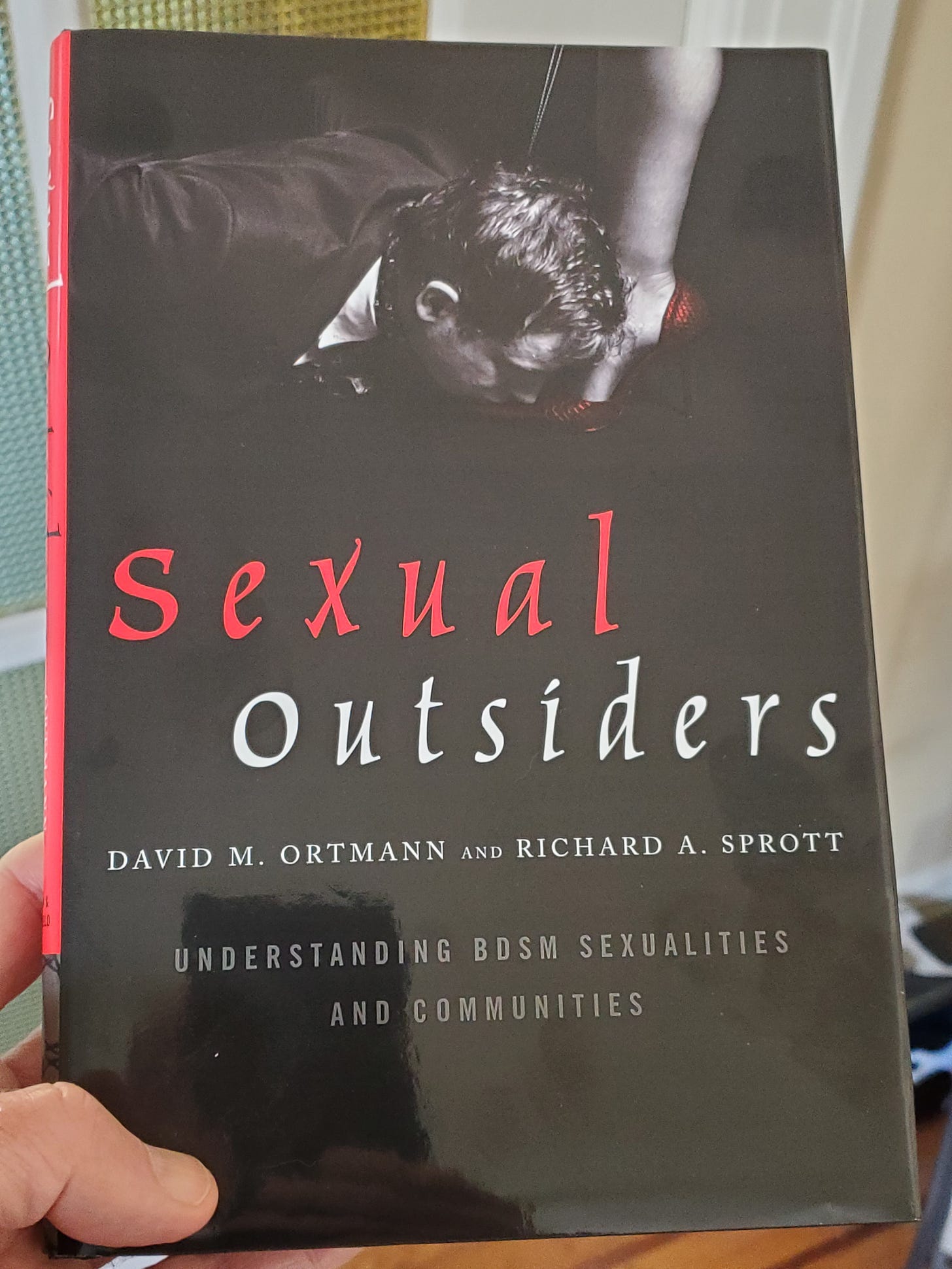The Era of Style
From the 1970s until today the kink communities in the United States have experienced different eras that I think define them
It’s been helpful for me to demarcate what I call the “eras of kink” into definable time periods. Such categories are entirely subjective and perhaps somewhat arbitrary. I know that. Other observers of these communities would likely arrive at different names, time periods, or consider the entire exercise altogether silly. But this categorization has proven useful for me. I offer these eras here should they foster discussion or prove useful to you. If not, thanks for indulging me.
My perspective is primarily about the United States. From what I know, kink has developed somewhat differently around the world and I’m not sure these eras sync with trends elsewhere.
As someone who came out into what’s typically called the leather and in some cases alternative sex scene in the early ‘70s, I consider that time period to have been what I call the Era of Awareness.
It was during that time erotic adventurers began to network and gather in earnest. No longer was kink something to be pursued as a solo practice, or a rare occurrence enabled by happenstance, or necessitating deep networking in mostly underground networks. We now knew there were others like us.
The ‘80s, ‘90s, and well into the 2000s expanded on that awareness and ushered in what I refer to as the Era of Competence. This was the time that the now networked kinksters began to perfect their shared messaging, skills, and community building. During this time, clubs and organizations flourished, education efforts skyrocketed, numerous local and national events were launched, and a community found its collective voice.
From about the mid-2000s until now, we’ve experienced what I refer to as the Era of Style. Now, before you discount the word “style” as the stuff of fluff and irrelevance, let me explain what I mean.
Style is that unique approach each of us develops to put our individualized stamp on our life experiences and expression. As a whole, our communities are well networked, organized, and skilled. The new differentiator has become the style with which we elevate the mundane to the good and the good to the exceptional. This is style with substance, not style over substance.
Today, we are quite aware of our fellow travelers in the scene and we’re tightly networked with them. Online connectivity has certainly helped in that regard. A community, both organized and loosely affiliated, has solidly formed.
We’ve worked hard to foster responsible play and improve people’s erotic skills and much of that information is now available through books, websites, educational offerings, and a robust peer network. In short, the foundation has been laid to usher in this Era of Style.
Think about it. What makes you stand up and take notice nowadays of a community member or player in the scene? What makes one person’s expression of their kink interesting and another’s not? Does technical competence impress you the way it once did? When there are a bevy of folks who can wield gear and implements with expert aplomb or do any number of sophisticated kinky scenes with skill, what makes one person stand out from the others? I contend that the answer is style.
Style can be the way someone exudes confidence about their sexuality. It can be the artistic precision with which someone dominates or submits to another. How one dresses or presents oneself can be done with style. Style can originate from the shine of an inner beauty and peace that comes through in sexual expression. Style can be an ease in acting true to one’s nature without the confines of tradition. These are the things that define those among us who stand out as the leaders, the players, those to whom we proudly point and say “there is an exceptional kinkster” and glow with pride at our association with them.
Individuality will thrive in the Era of Style. The shared messaging is moving away from conformity to one of individuality. Uniqueness is more the goal. Looking, acting, and playing exactly like everyone else has increasingly less appeal.
All that said, I’ve written elsewhere in Reframing What Is Kink Community about how the kink communities are “verticalizing.”
In my opinion, kink, and the set of communities it represents, needs to be reframed as a bunch of separate vertical communities that may or may not share many commonalities with other kink vertical communities.
Perhaps I should call the present moment the era of verticalized style, but that sounds rather clumsy, doesn’t it? Maybe I’ll come up with a better name eventually.
Anyway, embrace the Era of Style. Seek to express your individuality. Resist conformity. Hone your personal style.
Educator - Evie Lupine
Regularly I’m asked for pointers to good information about kink, BDSM, or some aspect of alternative sexuality. I have a few resources I consistently offer. One of them is Evie Lupine.
Evie has a great YouTube video channel on which her self-stated goal is to help everyone find their own personal truth as it relates to their sexuality, their desires, and their relationship needs. I think she does just that.
Check out her channel. Subscribe and click the bell to be alerted to her new videos. You can also find Evie on social media and you can support her work on Patreon.
Here’s one of her recent videos on vanilla Shaming, TikTok, and the normalization of kink.
Book – Sexual Outsiders
Want to read a great book that demystifies BDSM sexualities and communities? There’s none better than Sexual Outsiders: Understanding BDSM Sexualities and Communities by David M. Ortmann and Richard A. Sprott. I know David and Richard and they’re among the most highly respected in the psychotherapeutic world for their knowledge and insights about kinksters and kink communities.
The book is a guide for members of the BDSM community who often must wade through the quagmire of unique problems they face such as: coming out to family, friends and partners; distinguishing abusive relationships from healthy consensual ones; finding and developing community; overcoming shame and denial; exploring whether BDSM sexuality can be a healing tool; gaining access to quality, culturally competent psychotherapy; and finding strategies to develop a healthy sexual self-esteem in the face of current medical and social standards that view them as sick or pathological. It can also serve as an educational primer for those whose partners, friends, and family members are involved in BDSM.
I unequivocally recommend this book.
You can use this link to access all my writings and social media and ways to support my work.





